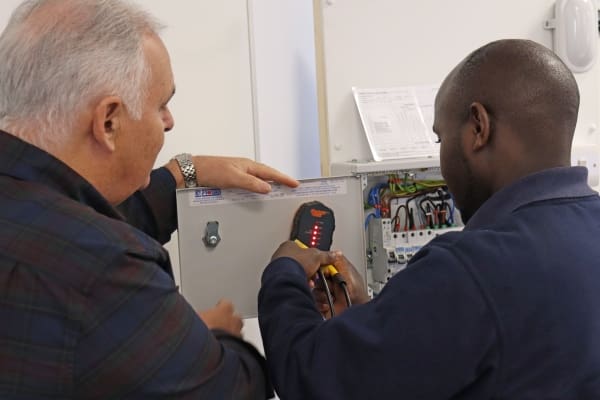The A-Z Building Services Maintenance: Acronyms and Terminology
The world of Building Services Maintenance can seem complex, especially for those just starting out in their careers. New technologies and industry best practices are constantly evolving, bringing with them new terminology and abbreviations. Here at Gratte Brothers Building Services Maintenance (GBBSM), we understand the importance of clear communication, and of supporting the next generation of Building Services professionals. That’s why we’ve created this guide, to explain some key terms you’re likely to encounter.
A:
Annual Gas Safety Inspection (CP12): A mandatory annual check for gas appliances and flues, ensuring they are safe and functioning properly.
B:
Building Automation: The use of technology to automate building systems like lighting, heating, and ventilation for improved efficiency and comfort.
Building Management System (BMS): A computerised network that monitors and controls various building systems like heating, ventilation, lighting, and fire safety.
C:
Cladding: The outer layer of a building’s exterior walls. Proper maintenance ensures its condition and weatherproofing.
Closed-Circuit Television (CCTV): A video surveillance system for security purposes. Regular maintenance ensures optimal image quality and functionality.
CP12: See Annual Gas Safety Inspection (CP12).
D:
Dwelling House Emergency Repair Scheme (DHERS): A London-specific programme that helps eligible homeowners pay for emergency repairs in their properties.
E:
Electrical Maintenance: Regular servicing and repair of electrical systems in a building, ensuring safety and functionality.
Energy Performance Certificate (EPC): An EPC rates a property’s energy efficiency from A (most efficient) to G (least efficient), helping the building’s owner/management to understand energy costs and scope for potential improvement.
F:
Fire Alarm System: A network of detectors and alarms that warn occupants of a potential fire. Regular maintenance ensures it functions properly in an emergency.
G:
Grounds Maintenance: The upkeep of the landscaping and grounds surrounding a building.
H:
Hard Facilities Management (FM): At its core, Facilities Management (FM) is divided into two key areas: Hard FM and Soft FM. Hard FM encompasses the physical assets of your building, such as plumbing, HVAC systems, and fire protection systems. See ‘Soft FM’ for details.
Health and Safety Executive (HSE): The UK’s independent regulator for workplace health, safety, and well-being. Building maintenance companies must comply with relevant HSE regulations.
Hoarding: Construction hoarding is the use of boards, fences or other standing structures to define and secure the boundary of a construction site.
I:
Intruder Alarm System: An electronic system that detects unauthorised entry and triggers an alarm. Regular maintenance ensures it functions properly.
L:
Legionnaires’ Disease: A potentially fatal lung infection caused by inhaling contaminated water droplets (e.g. from air conditioning). Regular maintenance of water systems helps control the risk.

Lift Maintenance: Regular servicing to ensure the safe and reliable operation of lifts (elevators) in your building.
Listed Building: A building with historical or architectural significance, often requiring specific maintenance considerations and approval from relevant authorities.
M:
Maintenance Contract: A formal agreement between a building owner or Managing Agent and a maintenance company outlining services provided and associated costs.
Mechanical Maintenance: Regular servicing and repair of heating and ventilation in a building, ensuring safety and functionality.
P:
Part L Compliance: Regulations in England and Wales regarding the energy efficiency of buildings. Building maintenance can help ensure your property meets these standards.
Planned Preventative Maintenance (PPM): A proactive approach to building maintenance, scheduling regular checks and servicing to prevent future problems and extend the lifespan of your building’s systems.
Portable Appliance Testing (PAT): The regular testing of electrical equipment for safety, particularly important in commercial and office settings.
Plumbing Maintenance: Regular servicing and repairs of a building’s water supply and drainage systems.
R:
Refurbishment: Extensive renovation or modernisation of a building.
S:
Security Services: Services offered by some building maintenance companies, such as patrolling the premises or CCTV and access control systems.
Soft Facilities Management: Soft FM focuses on services like cleaning, reception services, manned security and waste management. See ‘Hard Facilities Management’ for context.
T:
Thermal Imaging: Using a specialised camera to detect temperature variations in a building or distribution boards, helping identify potential issues with insulation or building systems.
W:
Waste Management: The collection and disposal of waste generated in a building. Some building maintenance companies may offer waste management services.
Y:
Yearly Service Contract: Another term for a maintenance contract.
Z:
Zone Heating: Dividing a building into separate zones with individual temperature controls to improve energy efficiency and comfort.
Ready to start your career in Building Services?
Now that you’ve learnt the lingo, it’s time to try it out in practice! If you’re looking for your first steps in the industry, our trade apprenticeships are an excellent opportunity to learn the skills needed for electrical or mechanical trades. Head over to our Contact Us page to find out more.
To learn more about our company, check out our About Us page, or see our latest updates in our News page.
